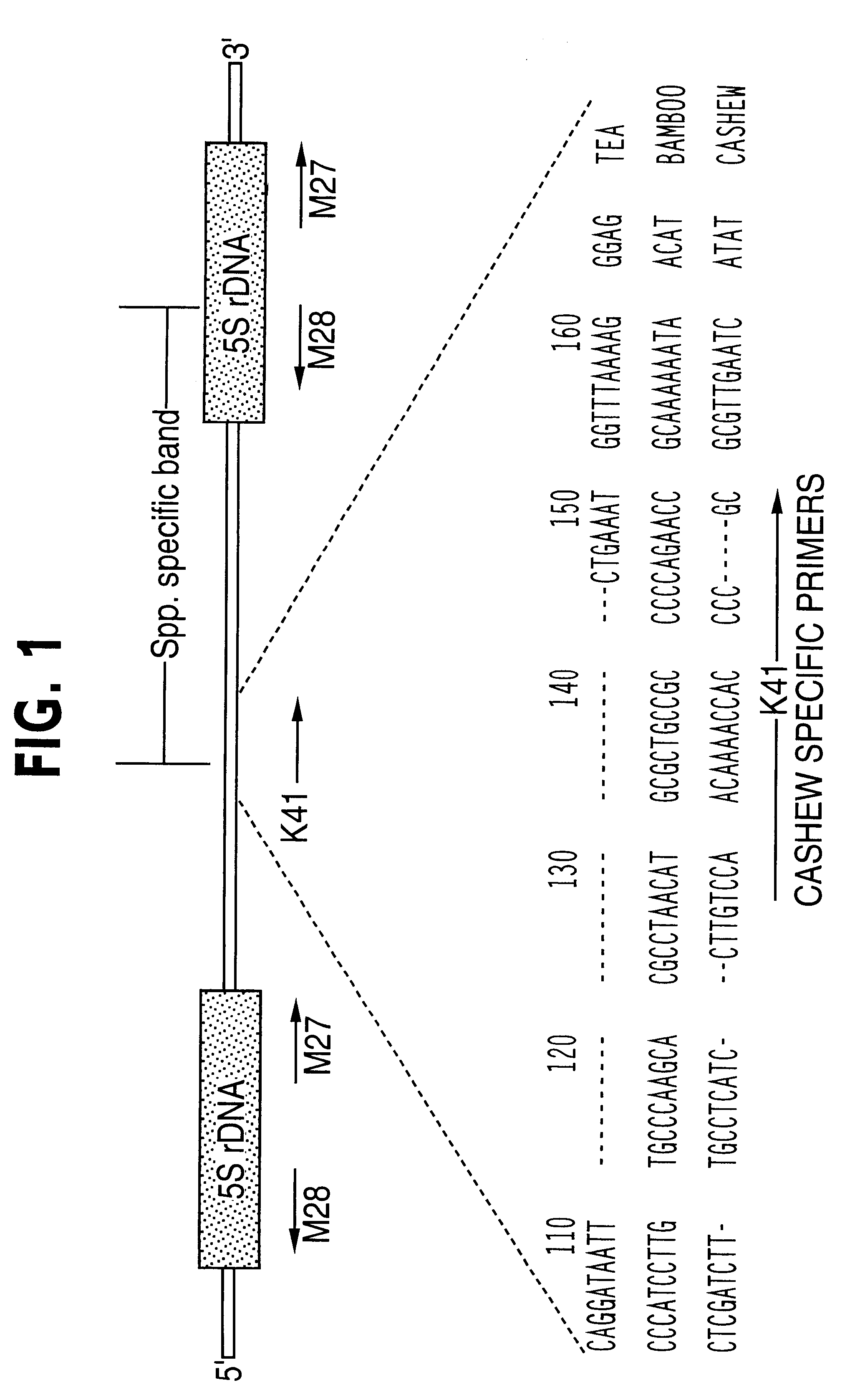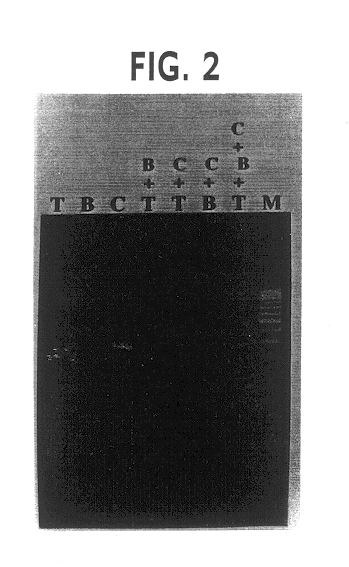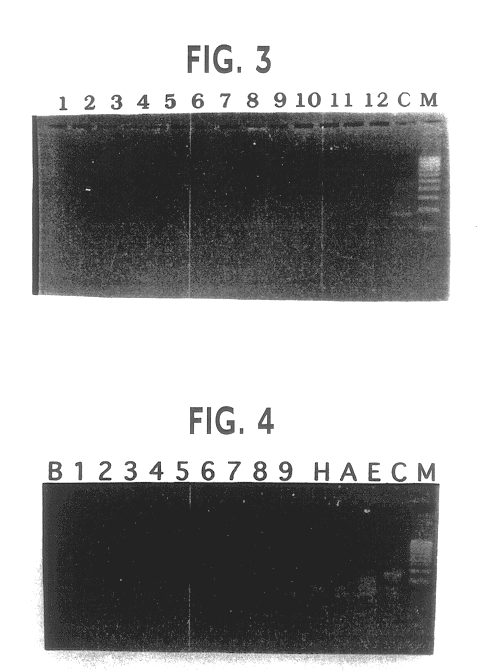Species specific genomic DNA sequences for identification of Anacardium occidentale and the method for its utilization in detection of cashew husk in made tea samples
a technology of anacardium occidentale and genomic dna sequences, which is applied in the field of species specific genomic dna sequences for identification of anacardium occidentale, can solve the problems of intense need to identify adulterants in tea, health risks to the society, and the appearance of limit to meet the world demand, and achieves sensitive, accurate and efficient methods of identification.
- Summary
- Abstract
- Description
- Claims
- Application Information
AI Technical Summary
Benefits of technology
Problems solved by technology
Method used
Image
Examples
example 2
Cashew Specific Primers do not Amplify 12 Commercially Grown Tea Cultivar's DNA
The cashew specific primer set (M28 / K41) is used to amplify genomic DNA isolated from 12 different commercial tea producing cultivars. As shown in FIG. 3, none of the cultivars genomic DNA can be amplified when clearly demonstrate that the method can be used for any brand of tea.
example 3
Cashew Specific Primers do not Amplify Majority of the Plant Species, Human, Animal and Bacterial Genomes
The cashew specific primer set (M28 / K41) is also used to amplify genomic DNA from 9 different plant species and one each of human, animal and bacterial genomic DNAs. As shown in FIG. 4, none of the species can show the expected amplification product. There is a faint amplification product in Valeriana, which is smaller ( about 120 bps) in size. Similarly, a band appears in E. Coli but its size is much smaller(about 90 bps) as against the 160 bps specific product. In human genome also there seems to be a 50 bp small amplification product. All these smaller PCR products are distinguishable from the cashew specific PCR product.
The main advantages of the present invention are:
1) It is specific to Anacardium occidentale.
2) It is highly sensitive and only nanogram amounts of DNA are required.
3) It can work equally well for degraded DNA.
4) It can work well for the processed tea samples ...
PUM
| Property | Measurement | Unit |
|---|---|---|
| Electric potential / voltage | aaaaa | aaaaa |
| Electric potential / voltage | aaaaa | aaaaa |
Abstract
Description
Claims
Application Information
 Login to View More
Login to View More - R&D
- Intellectual Property
- Life Sciences
- Materials
- Tech Scout
- Unparalleled Data Quality
- Higher Quality Content
- 60% Fewer Hallucinations
Browse by: Latest US Patents, China's latest patents, Technical Efficacy Thesaurus, Application Domain, Technology Topic, Popular Technical Reports.
© 2025 PatSnap. All rights reserved.Legal|Privacy policy|Modern Slavery Act Transparency Statement|Sitemap|About US| Contact US: help@patsnap.com



